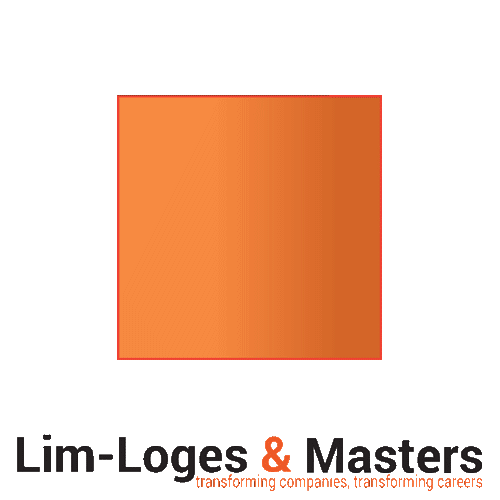

Lelia Lim
5+1 Key Things To Help You Reach a New Better: Thriving Through Transition
Current conditions are forcing us all to rapidly re-invent the future of our business. Practices that worked previously may now be ineffectual, but how do we bounce forward to “A New Better” and not just survive but thrive?
Over the years, even pre-COVID-19, ethical business practices have always been useful and applicable, despite conditions changing. The re-evaluation of your business model, the assessment of the competitive landscape, and re-aligning your products and services has always been good practice. They have now become ten times more essential!
There is a well-known saying; “A rising tide floats all the boats” – when the tide is high, and economies are buoyant, even poorly run businesses can still do reasonably well. Currently, we are at low tide, and it’s a great stimulus to conduct a review in preparation to emerge better from the crisis.
It all starts with re-evaluating your business. And to do this, you need to ask yourself and your team at least five quick questions. These will change your business thinking and get you into a new state that will better equip you in moving forward. (The bonus – 5+1 – question will act as a critical accelerator so don’t miss it!)
- Will we survive or not? The first and most critical question. Hopefully, your answer is yes. And with that positive decision in mind, then ask “will it be business as usual?”. If yes again, then count yourself lucky and go for it! If you’ll survive, but it won’t be business as usual, then you’re likely looking at a short-term or a long-term pivot to adapt to the current conditions. If it’s a no to survival altogether you will need to re-evaluate whether the enterprise is viable and pivoting is crucial – and quickly. Either way, the remaining questions can still help you.
- What have we got? – What are the strengths and core competencies that have brought you this far? Identify the keys to your success, and those elements a competitor would struggle to replicate. There are two great resources for this are:
- You and your team. Spend some time going deep into what you have that makes you great
- Your customers. Ask them what they love about dealing with you, why they chose you instead of another option, and why they’ve stayed with you? Also, ask them what you may be able to improve?
A key part of “what you’ve got” is what you don’t’ have! Look at your inherent weaknesses: things that are a challenge but are not likely to change over time. These include your location, the market you serve, your capabilities and the struggles you have had for some time. Rather than work on these, compensate for them with what you’re good at – outsource or mitigate them!
“The level of thinking that got you this far will not get you any further.” Einstein.
- What trends do we see?
How is society changing? How is the business evolving? How is the demand for products changing: where are more required, which are remaining steady and which are in decline? What technological changes are occurring? Look at the changes in the lives of your employees, your customers, and your customers’ customers.
- What problems may emerge that we can solve? (with what we’ve got)
What sector of people or businesses are likely to have a problem (a need) that’s going to emerge, or continue to grow out of the trends we see? What will people or businesses struggle with that we can provide a solution for?
- How may we solve these problems and engineer solutions? (how do we apply what we’ve got to our opportunities).
There now needs to be a way of connecting what is unique and special about what you do to your problems. After all, a business only exists if it continues to solve a problem!
Connecting what you have to opportunities is another way of stating your business model. The approaches will likely fall into four different sectors based on their ease of implementation and the impact they’re likely to make.
- Challenging to implement – minimal impact. These are essentially a waste of time!
- Easy to implement – minimal impact. These are good tactics. Do them if you must, but they’re not going to give you much of a return.
- Easy to implement – high impact. These are winning moves. You will likely need to do these. However, because they create gains for the customer and are relatively easy to implement the competition is likely to be focusing here, and they may be regarded as “table stakes” as we move forward. (Overnight delivery for couriers was considered a great advantage when it was conceived but now, if you can’t do this at least domestically, don’t play the game).
- Difficult to implement – high impact. These come under the category of ‘wild ideas’. The gains for potential customers are significant, but no one may have done them yet. It’s also where profits can hide. Ask what problem ‘could’ we solve that no one’s thought of? How are the trends evolving to open up a gap that no one can see yet? What resources are becoming available that are under-utilised but can still be of use?
Here are a few examples of companies that have pivoted and created a new opportunity. Yes, they’re large organisations, but you can use the same principles.
Amazon – constructed a robust infrastructure for their own ordering and logistics process. Having built it, they realised they could offer that same platform to customers. This spawned Amazon web services (using their inherent strength to meet the trend of cloud computing).
Fuji – Formerly making chemicals and paper for the photographic industry, they recognised that rapidly the sun was setting on that business as everyone was going digital. As chemists they understood how to manufacture chemical compounds so re-positioned themselves to make cosmetics, becoming profitable in a whole new space.
Starbucks – Their strength is their audience, both online and physical. Their large audience allows them to offer a broader product range.
Your Value Proposition:
Answering the five prompts above will give you a firm foundation for creating your value proposition. It may be a well-worn term, but value is the only thing a customer will pay you for. If you can’t quantify your value and relate it to customers, the most likely thing a potential customer can use for comparison is your price…not a great position to be in!
We need to be able to quantify:
- The problem you solve.
- How you solve it.
- What is unique and special about how you solve it.
If so, you’ve now created your value proposition!
5+1 Ask “who” questions first!
The fastest way to solve a problem is to ask, “who can help me?” or “who can connect me with someone who can help me?” This is an essential question for both problem-solving and marketing. Bill Gates considered this the most powerful question he’d been asked about growing Microsoft!
People that can help may include contacts in organisations to connect you with key customers, contacts in regulatory bodies to help with technical issues or compliance, or key contacts in customers themselves. Asking a who or a relationship question is almost always faster than struggling with matters yourself, and there are lots of ways to develop relationships.
An essential WHO these days is a coach. In all endeavours from music, sports, and business, all the leading figures have had them. The late Bill Campbell even coached former Apple CEO, Steve Jobs. No one discounts success just because someone has helped!
With the five prompts and the extra key accelerator above, you will help your business thrive through transition and reach your new better!
There’s no rule that you must succeed on your own…..just succeed!
If you require advice or mentoring, please do not hesitate to contact our team of experienced coaches and advisors at LLM. For more in-depth information listen to our recent webinar ‘A New Better: How to Thrive through Transition’ on 16 June 2020 by Ian Holmer, Senior Partner at LLM, as part of our Future Ready Series.







